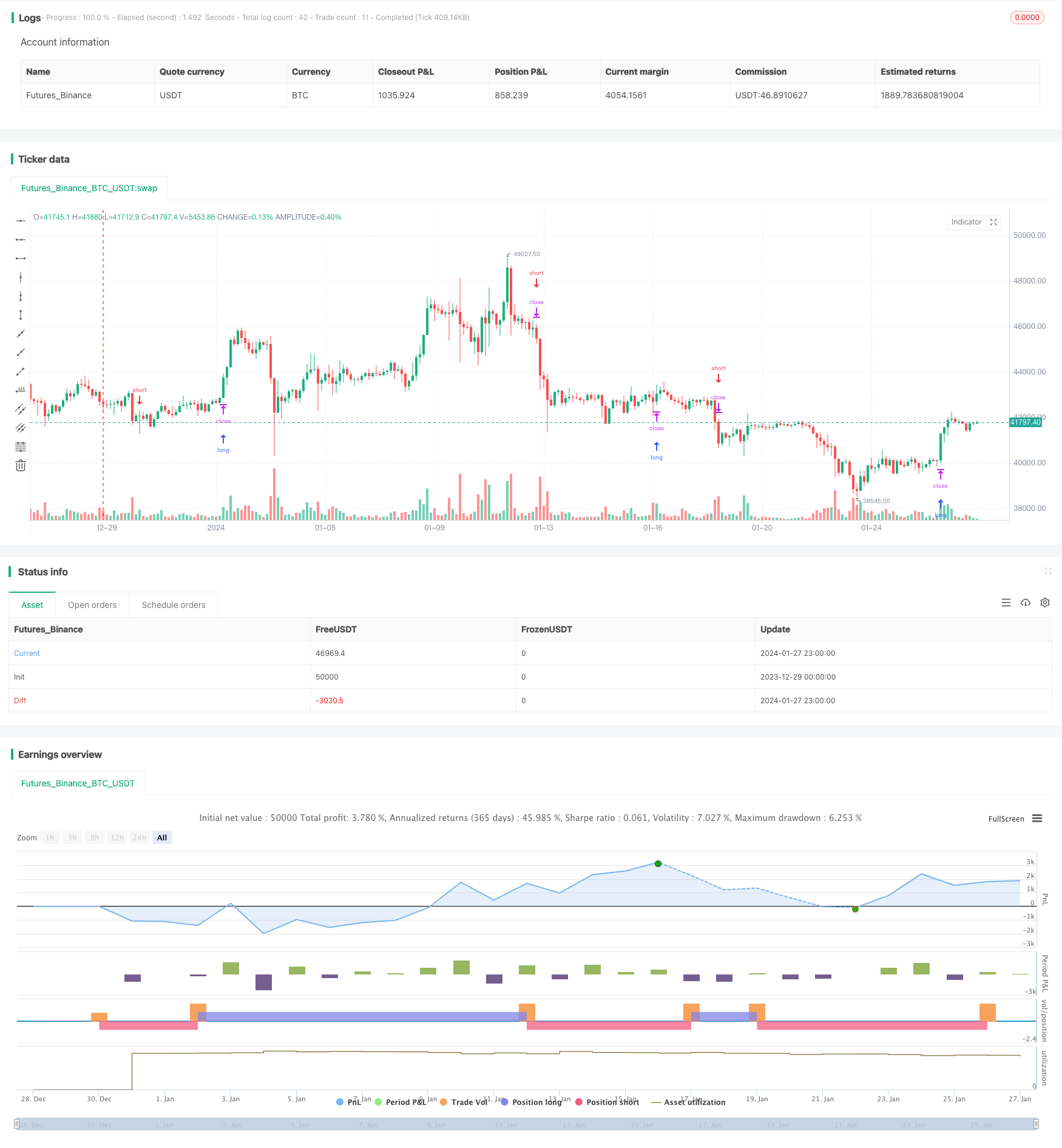
概述
“动量趋势追踪者”策略是一种精心设计的工具,旨在利用波动性、趋势和动量指标的汇聚为交易决策提供依据。该策略的独特之处在于它结合了平均真实范围(ATR)来动态调整止损位、简单移动平均线(SMA)来过滤趋势、以及移动平均线散度(MACD)来确认入场信号。
策略原理
波动性评估
该策略采用ATR来动态调整止损位,以适应市场波动性的变化。这种方法可以确保止损位对当前市场状况作出更灵敏的反应,潜在地减少止损过早的风险。
趋势过滤
通过使用SMA,该策略可以过滤入场信号,确保它们与整体市场趋势一致。这种过滤对于避免做单与主要市场方向背离是至关重要的,因此可以增加交易成功的可能性。
动量确认
MACD指标作为一个动量过滤器,它确认入场信号是否与当前市场动量一致。这额外的确认层有助于过滤假信号,增强了策略的可靠性。
优势分析
该策略汇聚了ATR、SMA和MACD,它们之间的组合并不仅仅是指标的简单叠加。相反,其中每一个组成部分都在交易决策过程中发挥着关键作用,从入场到止损。这种整体方法为交易者提供了一个综合的策略,利用了多个市场维度,提供了一个独特和有价值的趋势跟踪和动量交易工具。
风险分析
该策略主要依赖指标的配置,如果参数设置不当,则会产生错误信号。此外,在趋势变化点附近,SNR较低的交易信号可能导致虚假突破。为减轻这些风险,建议优化参数设置,并结合其他 confirming indicators 提高 robustness。
优化方向
该策略可以通过引入机器学习算法来动态优化参数,使其能根据当前市场条件进行调整。另外,整合更多数据源如新闻事件、社交媒体数据等,可能有助于判断市场转折点,减少late entries。此外,该策略可扩展到多 timeframe 或多品种,以捕捉更多交易机会。
总结
“动量趋势追踪者”策略充分利用了多个指标的优势,为交易决策提供了一个宝贵的工具。卓越的参数设定与市场理解是发挥该策略价值的关键。尽管存在一定改进空间,它为有经验的交易者提供了一个独特的视角,值得投入时间与精力进行测试与优化。
/*backtest
start: 2023-12-29 00:00:00
end: 2024-01-28 00:00:00
period: 3h
basePeriod: 15m
exchanges: [{"eid":"Futures_Binance","currency":"BTC_USDT"}]
*/
//@version=5
strategy("trend_hunter", overlay=true)
length = input(20, title="ATR Length")
numATRs = input(0.75, title="ATR Multiplier")
atrs = ta.sma(ta.tr, length) * numATRs
// Trend Filter
smaPeriod = input(32, title="SMA Period")
sma = ta.sma(close, smaPeriod)
// MACD Filter
macdShortTerm = input(12, title="MACD Short Term")
macdLongTerm = input(26, title="MACD Long Term")
macdSignalSmoothing = input(9, title="MACD Signal Smoothing")
[macdLine, signalLine, _] = ta.macd(close, macdShortTerm, macdLongTerm, macdSignalSmoothing)
// Long Entry with Trend and MACD Filter
longCondition = close > sma and close[1] <= sma[1] and macdLine > signalLine
strategy.entry("Long", strategy.long, stop=close + atrs, when=longCondition, comment="Long")
// Short Entry with Trend and MACD Filter
shortCondition = close < sma and close[1] >= sma[1] and macdLine < signalLine
strategy.entry("Short", strategy.short, stop=close - atrs, when=shortCondition, comment="Short")
//plot(strategy.equity, title="equity", color=color.red, linewidth=2, style=plot.style_area)